|
Week ending: 26th February: Ardmore Point
My WeatherPro app predicted a high pressure weather system parked over West Central
Scotland. Consequently, I opted for a visit to Ardmore Point on the north coast of the Clyde
Estuary near Dumbarton. Prolonged periods of sunshine were expected - music to my ears, and,
although the skies were cloudy when we set off, by the time we reached Dumbarton the sky was
blue and the sunshine was strong. We had breakfast in the Dumbarton Morrisons Cafe (7/10: Very
nice but marks were deducted for tiny plates and lukewarm food).
After parking at the Ardmore Point car park we set off on a circuit around the Ardmore
peninsula. Near the Ardmore House gatehouse we saw our first Daffodil blooms of the year. In the
same area we also saw Crocus and Snowdrops, also in bloom. As I photographed these flowers
with my trusty wee Panasonic LUMIX TZ70 in macro mode, John took charge of the Nikon D500
with Sigma 600mm zoom lens and captured great images of a House Sparrow, Robin and
Dunnock that were active around the back of the gatehouse.
| Daffodil |
Crocus |
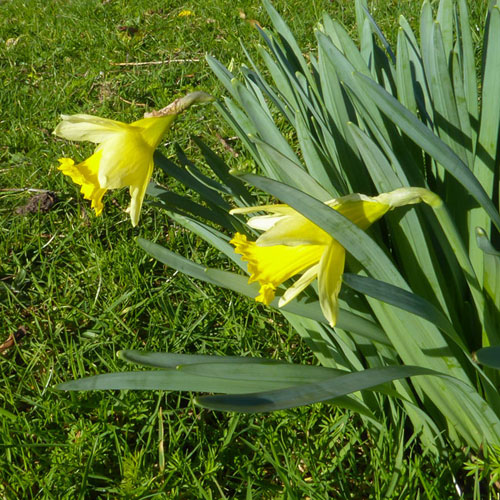 |
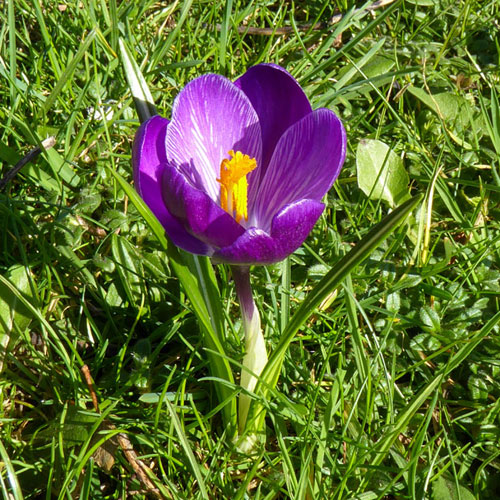 |
| Common Snowdrop |
House Sparrow |
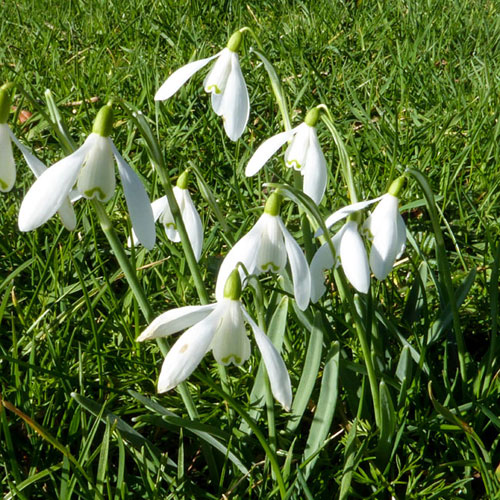 |
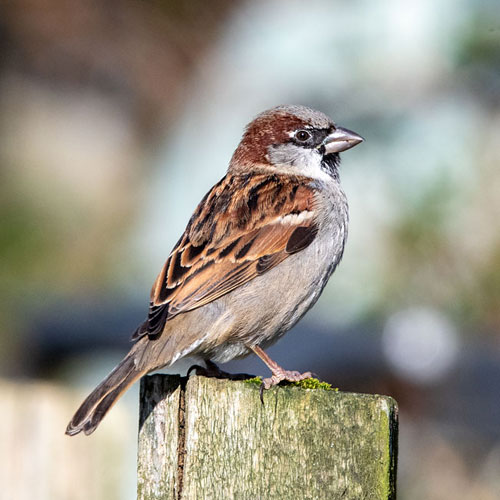 |
| Robin |
Dunnock |
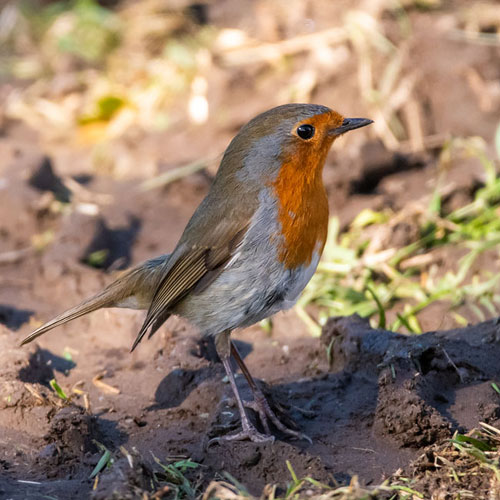 |
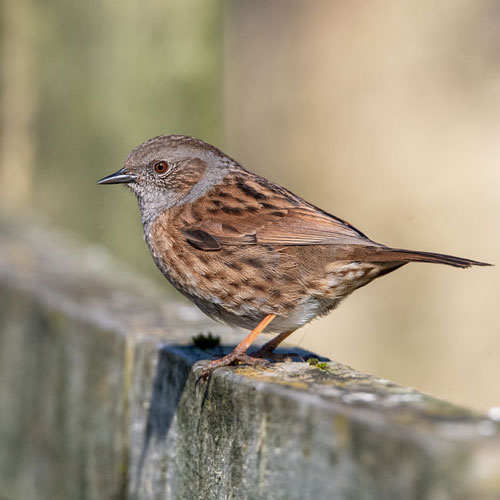 |
The path took us out of the South Bay and along the Clyde Estuary. The Sun was in the west and
so was behind all of the birds we observed along the shore, such as a small flock of Wigeon and a
beautifully silhouetted Curlew on a rock. A bit further on we also saw Redshanks and a pair of
Common Seals lounging in the shallows.
| Wigeon |
Curlew |
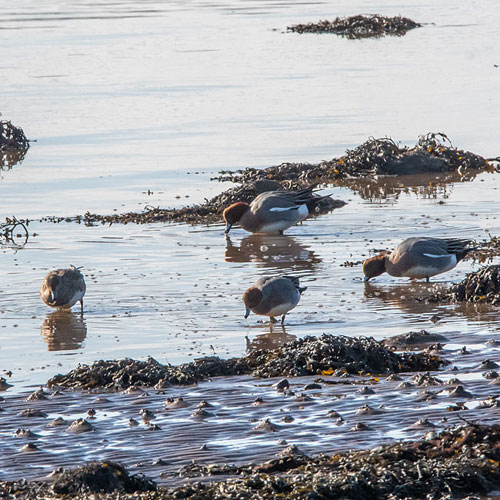 |
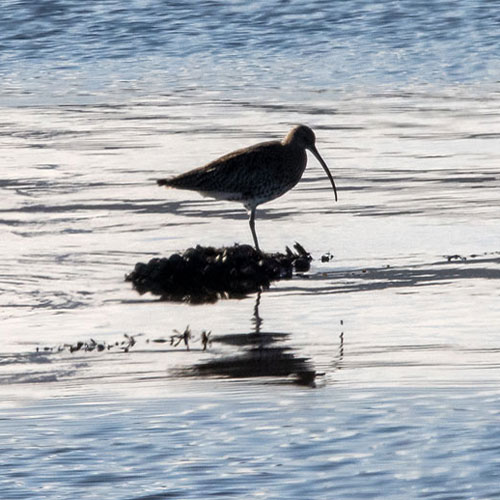 |
| Redshank |
Common Seal |
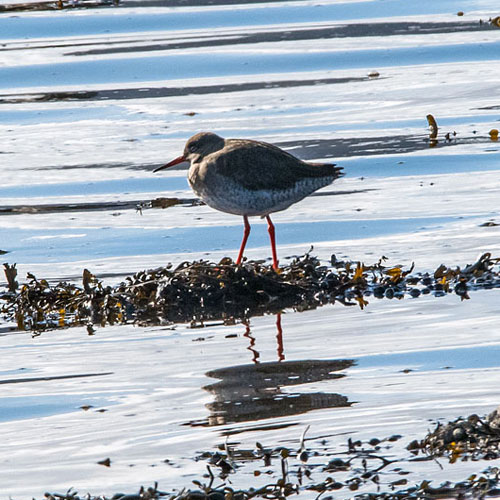 |
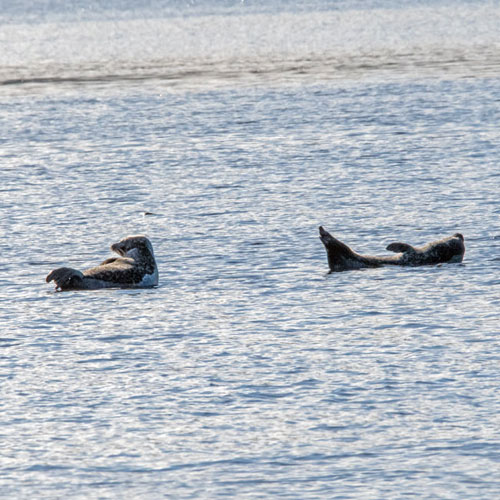 |
However, we kept a good eye on the fields and trees to the right of the path. Those yielded nice
shots of a Carrion Crow, House Sparrow, Starling and another Robin. I also spotted a white
bracket fungus (as yet unidentified, ) on one of the trees.
| Carrion Crow |
House Sparrow |
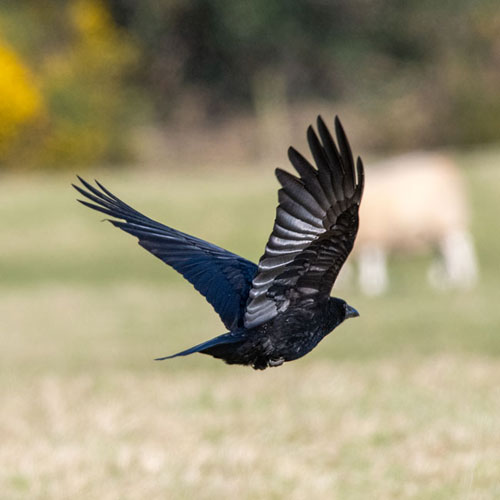 |
 |
| Starling |
Robin |
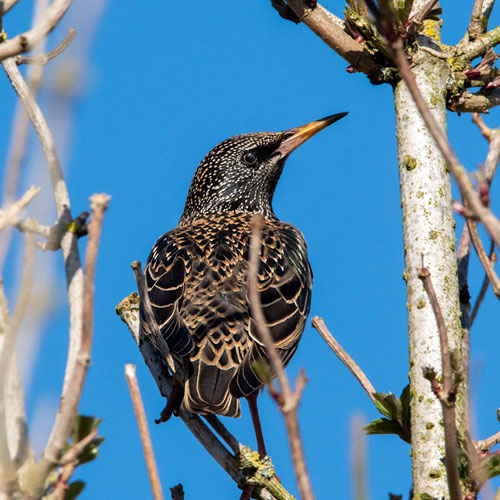 |
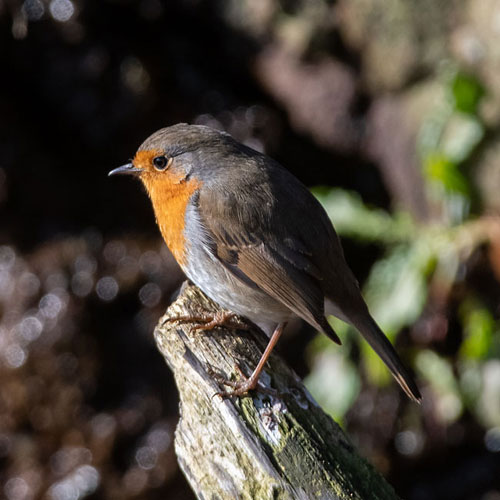 |
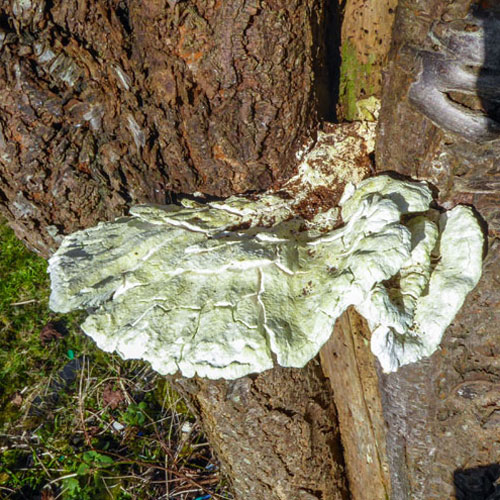 |
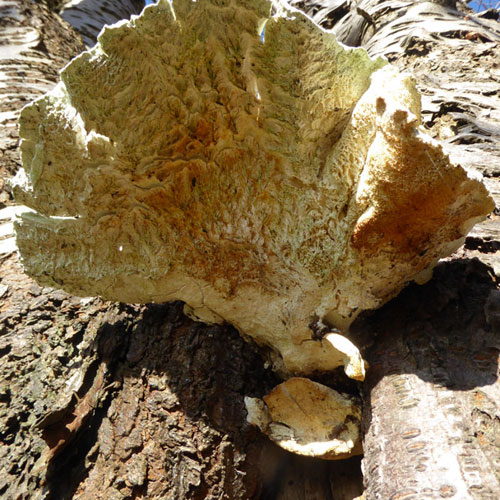 |
Below is a view of the South Bay looking back from the path as it first meets the Clyde Estuary.
Note the beached boat.
While I was taking the above shot I was hearing a Wren singing from some gorgeous Gorse
bushes that were carpeted in yellow blooms. On investigation I located the Wren fairly easily. As
we made our way along the path, recently improved by the laying of gravel, we came upon some
oak saplings covered in Oak Galls. At first we thought the Galls were berries, but we now believe
they are more likely to be Galls
We rested on our 3-legged stools for a few minutes at a patch of short grass at the edge of the
shore. We were attracted to that spot by the Crocuses growing there and also by yet another
Robin that was hunting for insects in a seaweed pile. John suggested it was the same Robin
following us round the circuit. There was also an elusive Wren which managed to escape the gaze
of my camera. We were delighted to see our first insect of the year, a queen Buff-tailed
Bumblebee. It seemed to be moving rather hesitantly as I photographed it, and no wonder,
it was carrying a massive load of mites. The good news is though, that most types of mite aren’t
harmful to their hosts and in fact they may help the bees by keeping their nests tidy and
pest-free.
Near the North Bay John noticed a Shag flying and diving quite close to the shore. I don’t think
I’ve seen a Shag with a higher diving “arc”, but if it caught anything then it didn’t bring it to the
surface in the time we were watching.
This is the view north-west towards the Gare Loch, taken from where the path first meets the
North Bay.
I snapped a furtive female Blackbird as it probed seaweed for invertebrates. At the North Bay the
tide was beginning to fill the bay with water, however, we were disappointed to find that there
were very few birds along the water’s edge. We did see a small group of Teal and a couple of
Oystercatchers close to our observation point, but that was all we saw in the North Bay. I took
one final shot of the scenery, the splendid view across the North Bay, looking towards
Helensburgh, before we took the path the leads to the car park.
| Female Blackbird |
Teal |
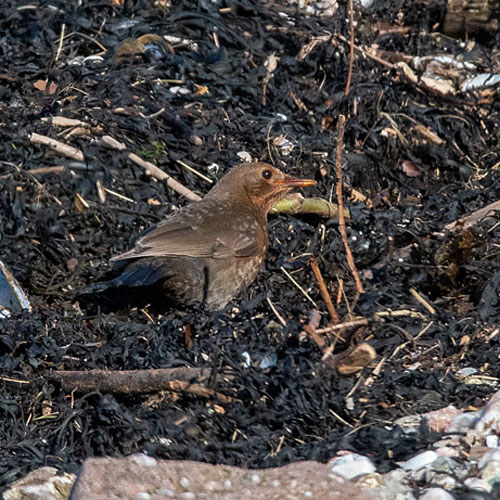 |
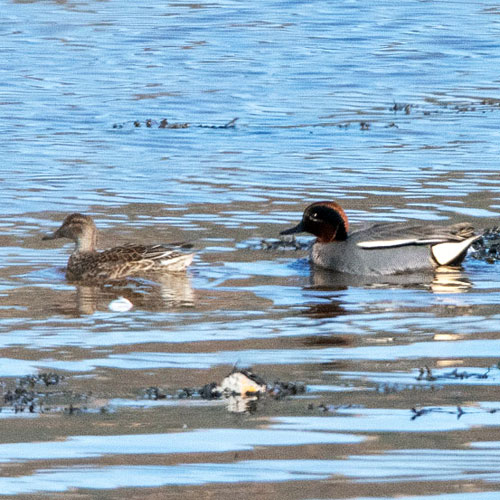 |
| Oystercatcher |
|
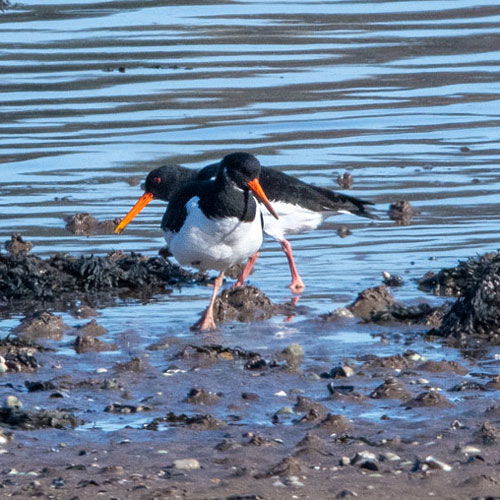 |
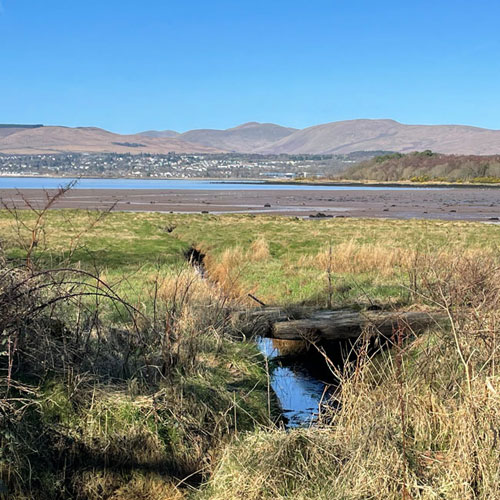 |
As we walked the last section of path, John alerted me to a pair of Jackdaws incoming across the
adjacent field. I snapped one of these and then noticed a lone Mistle Thrush working the
field. I followed this with quick shots of a Starling and a low-flying Carrion Crow. My penultimate
shot of the day was of a very pretty Blue Tit posing on a branch of the tall tree at the gatehouse.
We ended the day, as usual, with teas accompanied by a tasty treat - cream doughnuts. The final
photograph taken was of a Herring Gull circling the car park probably trying to get a piece of the
doughnut action - no chance!
| Jackdaw |
Mistle Thrush |
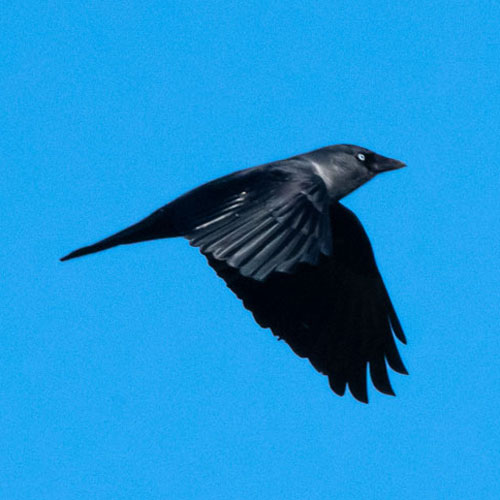 |
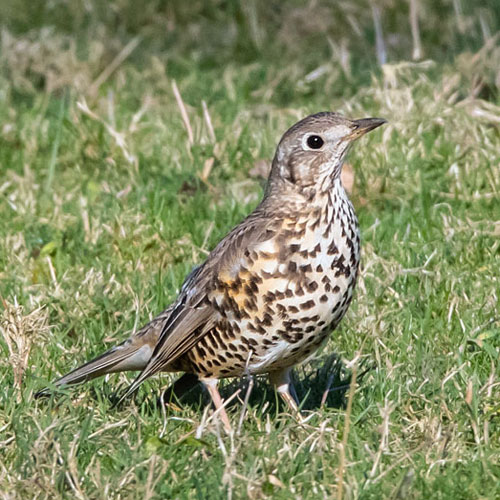 |
| Starling |
Carrion Crow |
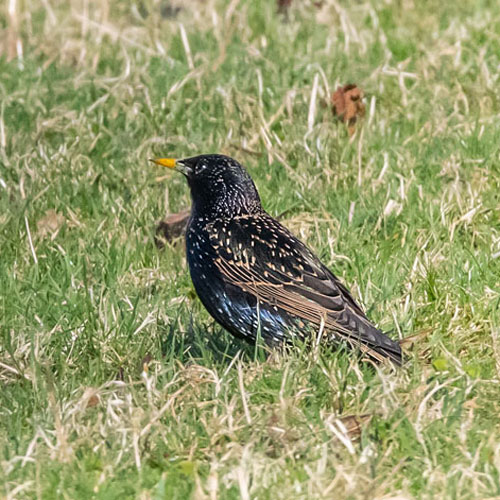 |
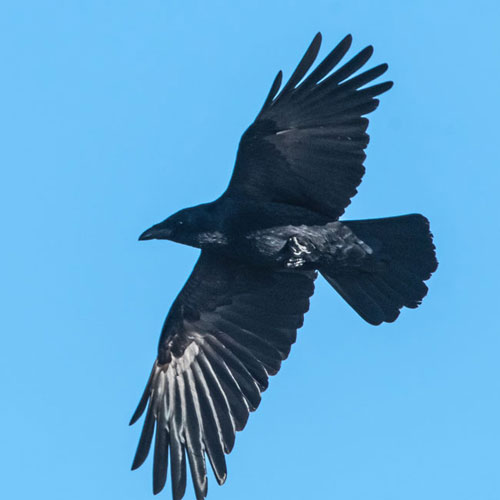 |
| Blue Tit |
Herring Gull |
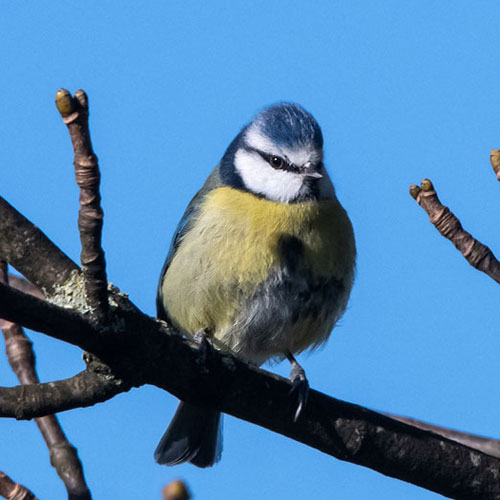 |
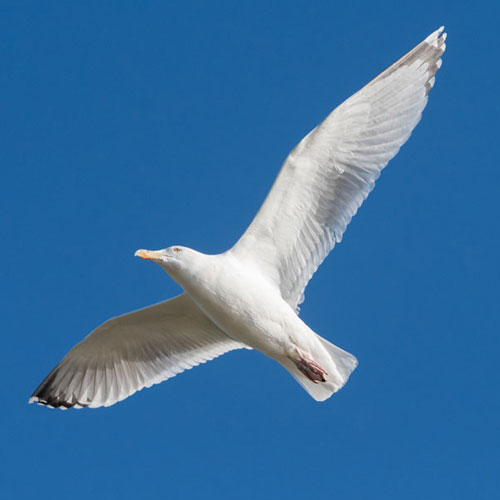 |
We were disappointed at the lack of seabirds (although if we were scopers we would probably be
more pleased, as the following day, at least one such birder reported large numbers of Slavonian
Grebe, Great Crested Grebe, Red-throated Diver and Bar-tailed Godwits), but the passerines and
first annual sightings of Daffodils and Bumblebee more than made up for it, as did the lovely
weather. Let’s hope next week’s weather will be as bright and cheery
Week ending: 19th February 2023: Pow Burn (Map), Troon, Irvine Harbour.
The weather prediction for the whole of Central Scotland was very disappointing: overcast skies,
rain showers and high winds, although temperatures were to be on the mild side for the time of
year. I did see a chink of encouragement when I checked the Ayrshire coast, where there was a
low chance of rain. I also checked the predicted tides and found it would be mainly high during
the first part of our visit. Pow Burn( Website), just north of Prestwick, is known to be a site where
birds shelter at high tide, so I chose it as our preferred location. We last visited there last May so it
was due a visit. We had breakfasts on the way, at Stewartfield Morrisons, East Kilbride ( 7/10:
Good but rather spoiled by overcooked bacon and egg and the unfortunate surly attitude of one
of the staff).
At Pow Burn we park by the side of the approach road into the Prestwick Holiday Park. As soon
as we got out of the car, John, now reunited with his trusty binoculars, spotted Starling and
Curlew flocks in the adjacent field. We followed the beach road to the bridge over the Pow Burn
where I snapped a clump of Snowdrops blooming on the grassy banks. A lively Great Tit
joined us and obligingly posed on a tree for photos.
| Starling |
Curlew |
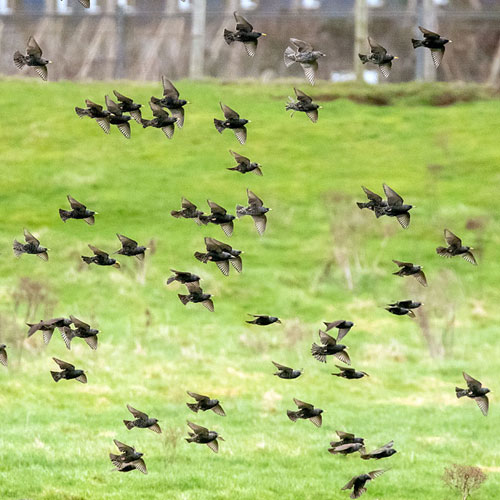 |
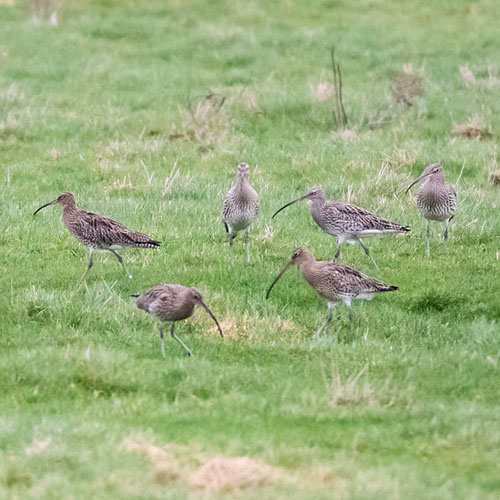 |
| Common Snowdrop |
Great Tit |
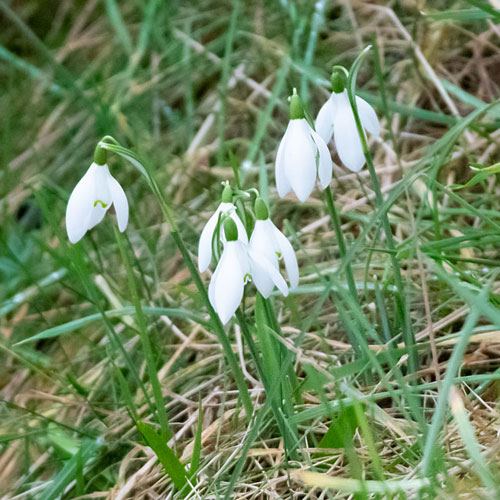 |
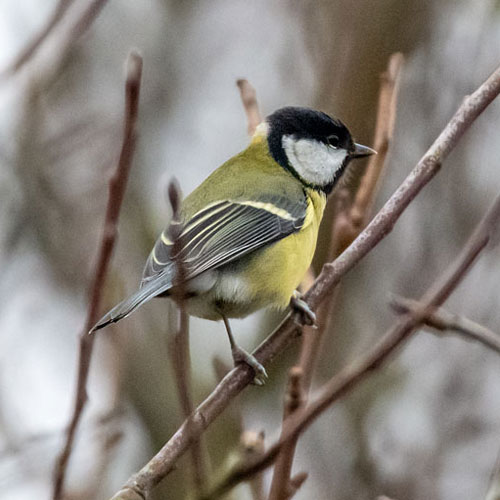 |
Looking downstream from the bridge we could see birds gathered around the bend. There were
Mallards and I was pleased to see a Red-breasted Merganser. We took the path that followed the
burn and encountered a Magpie sitting atop a small tree. Near the bend I got a better view of the
birds we’d seen. There were Oystercatchers flying around the area and a large flock of Wigeon feeding in the shallow burnside pools.
John also spotted a few Teal amongst the Wigeon. He also noticed a lone Curlew feeding
by a sleeping Mute Swan. We noticed that there were more Mergansers swimming further
downstream so we trekked round the rough path in order to get a closer view. On the way I
managed a shot of a drake Teal in flight.
| Teal |
Curlew |
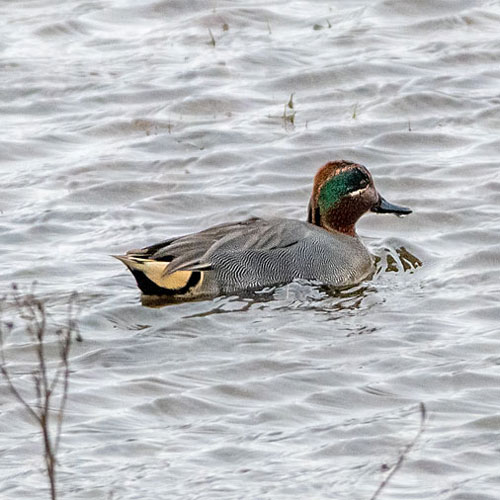 |
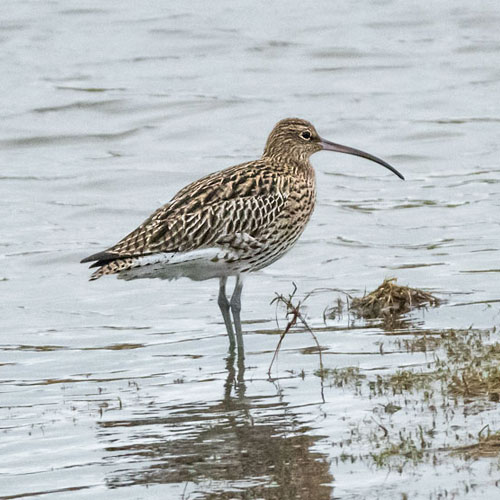 |
| Mute Swan |
Teal |
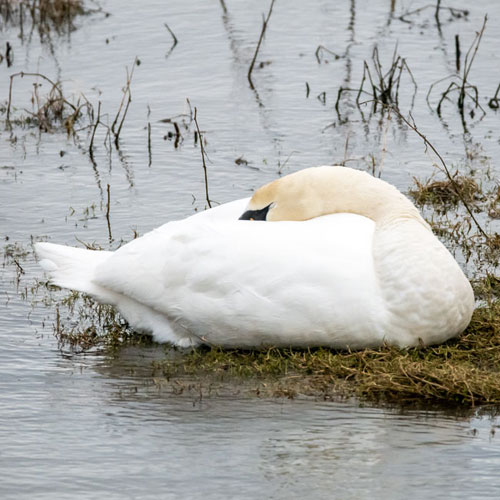 |
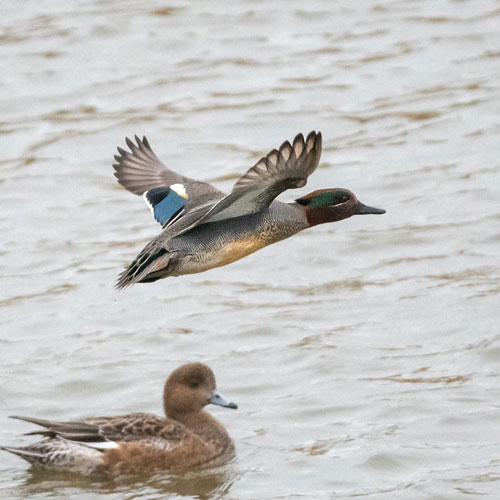 |
We found a gap in dense bramble bushes that were lining the high-sided channel through which
the Pow Burn flows to the sea. I approached the viewpoint slowly lest I disturbed and birds there.
Some of the Red-breasted Mergansers were at the opposite side of the burn and I fired off
some shots of a group of six as they came into view.
As I moved ever so slightly closer to the burn I disturbed an unseen flock of Wigeon that had been
just below the viewpoint. They dashed onto the burn and they in turn disturbed both the
Mergansers and a large flock of Redshanks that had also been hiding with the Wigeon.
Luckily a large number of those birds returned to the burn, and I had little bother in photographing
them, including another Curlew. We eventually returned to the car just in time to see once more
the Curlews and Starlings we’d observed at the start, circling the same field. We couldn’t see
what put had them up. Perhaps it was passing train.
The birds circled for 5 mins before descending back onto the field.
We relocated to Troon seafront, parking at the South Beach Road car park.
A few hardy kiteboarders were happily taking advantage of the very
strong, gusty wind that made it difficult for me to keep the camera steady.
However I persevered and
managed shots of Pied Wagtails that were on the promenade and on the beach. There were also
Turnstones on the rocks just below the sea wall busily searching for food around the seaweed piles.
We had a brief visit to the Troon Harbour car park and got a pleasing shot of an immature
Common Gull carrying a small shellfish as we walked the small beach to the north of the car park.
I next photographed noisy Oystercatchers and some restless Rock Pipits. John spotted a Ring
Plover that that had been hiding in plain sight on the beach, so well camouflaged we only
saw it when it made a dash for the rocks.
| 2nd Cycle Herring Gull |
Oystercatcher |
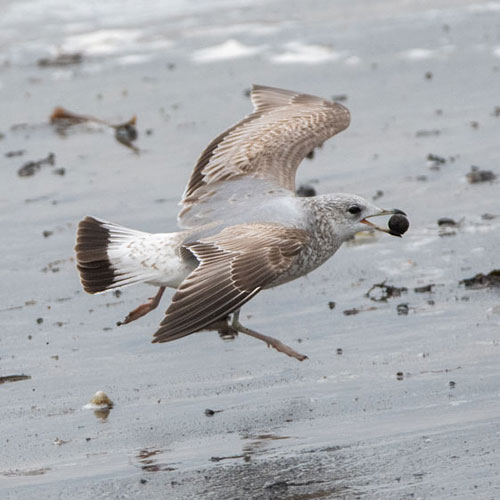 |
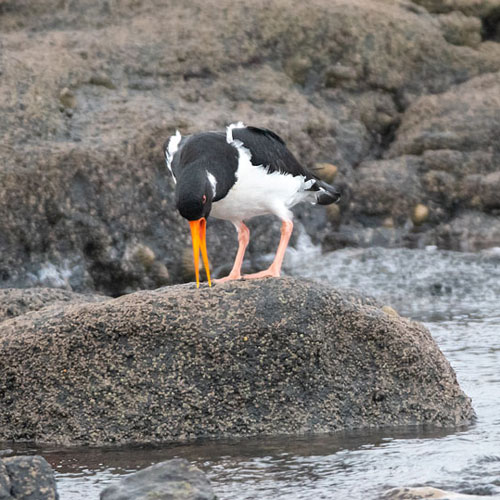 |
| Rock Pipit |
Ringed Plover |
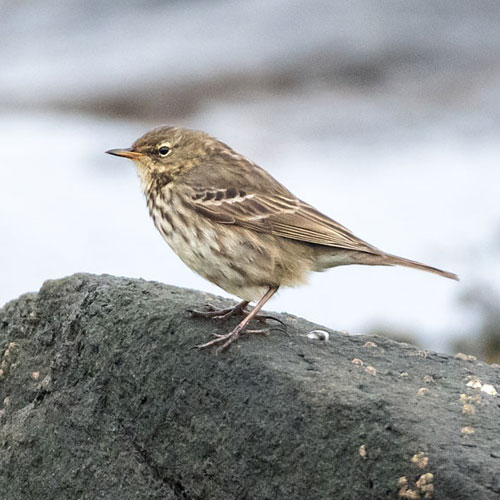 |
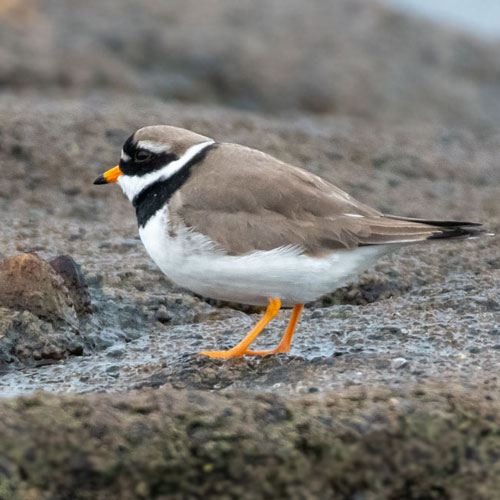 |
Our final stop of the day was Irvine Harbour. The wild wind showed no sign of abating but we set
off along the promenade. John scanned the River Irvine near the Scientists’ Bridge and
discovered a Common Seal had surfaced about 30m away as a pair of Oystercatchers flew
down the estuary. We walked to the viewpoint at end of the prom where I got a nice shot of a
Carrion Crow.
As I scanned the rocky shore beyond the viewpoint I noticed that there were Turnstones foraging
in the gale.
To our right we could see a Cormorant on one of the tall posts in the estuary mouth. It flew off the
post and dashed upstream and was almost immediately replaced by a Great Black-backed Gull.
My last shots of the day were of a drake Red-breasted Merganser that I watched fly out from the
River Irvine and dive into a wall of water, that was a wind-generated breaking wave, just before it
smashed onto the rocky shore. The Merganser simply bobbed up and then down as the giant
wave passed. I bet it enjoyed it!
| Cormorant... |
|
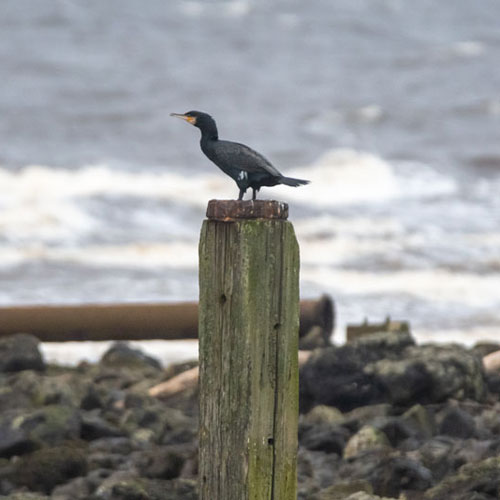 |
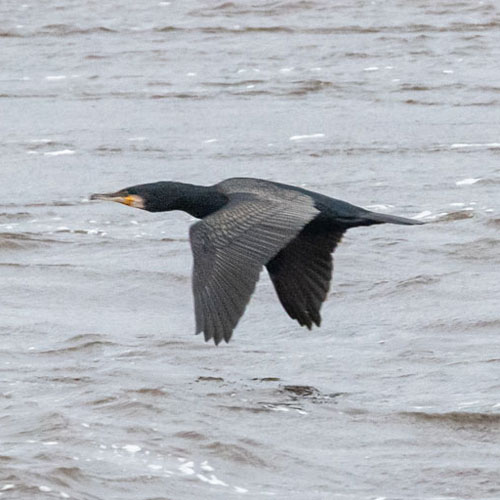 |
| Great Black - backed Gull |
Red - breasted Merganser |
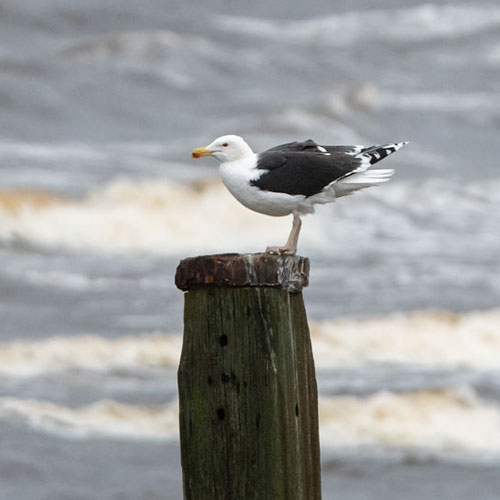 |
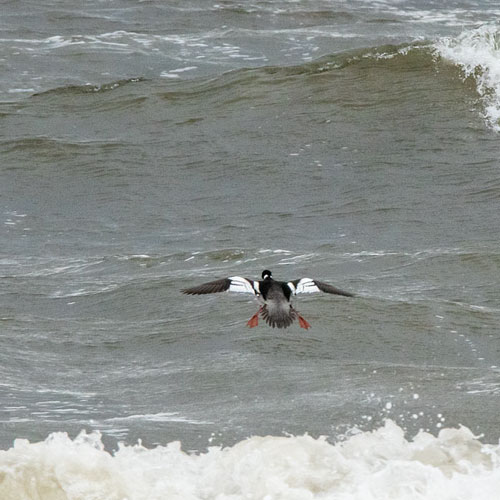 |
Well, from believing it was a day that promised very little due to the dull conditions, I think we
ended up rather satisfied with our haul of sightings. Our strategy of visiting a place where birds
hang out during high tide certainly paid off. I especially enjoyed seeing the beautiful and
entertaining Red-breasted Mergansers. Also, at Troon, the Turnstones were nice to watch and, at
Irvine, the sad-eyed Common (“Sammy”) Seal at Irvine was charming. To properly finish the trip,
we dived into cream scones along with our usual cuppas. (Well, Strawberries are out of season)
Week ending: 12th February 2023: Torness Power Station(Map) walkway and Dunbar Harbour
The weather prediction for the whole of Central Scotland on Sunday was that it would be mild and
dry with overcast skies. However, there was to be a glimmer of a chance of sunshine around and
beyond Dunbar. I thought that Torness (Website) would be an appropriate place to visit, so after
another very fine breakfast in Dalkeith Morrisons, (9/10) we drove down the A1 to the Torness
nuclear power station carpark. We were immediately disappointed to find that the skies were
overcast but we hoped that the Sun would soon break through.
We set off along the concrete-clad coastal walkway and although we had mislaid John’s
binoculars and had set off without them, we had immediate success when John spotted a wee
Stonechat. Very soon afterwards we met a small flock of Pied Wagtails that were hunting
flies on the walkway. Once again, it was John, who spotted the next bird, an elusive little Robin.
However, I tracked its movements and managed a fairly decent shot of it as it sat on one of the
tetrapods (sea defence concrete blocks). John, obviously compensating for the fact that he had
no binoculars, spotted yet another bird, a Rock Pipit feasting on the flies that were
gathered on the walkway. I followed this with a shot of an Oystercatcher that was foraging on the
exposed rocks below the walkway.
| Female Stonechat |
Pied Wagtail |
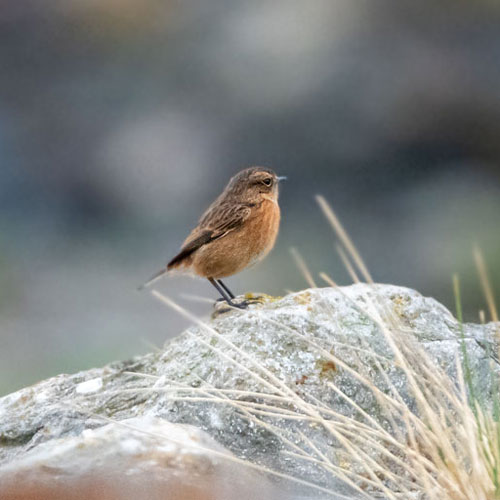 |
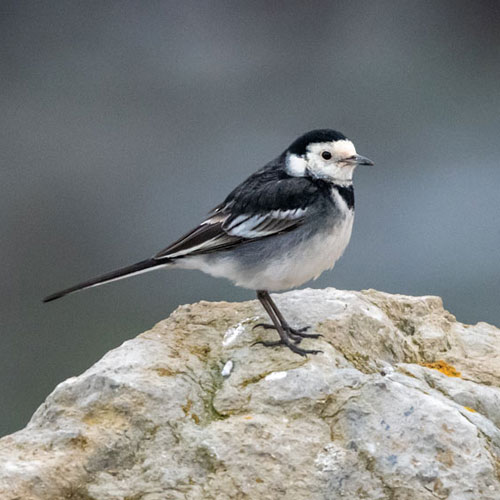 |
| Robin... |
|
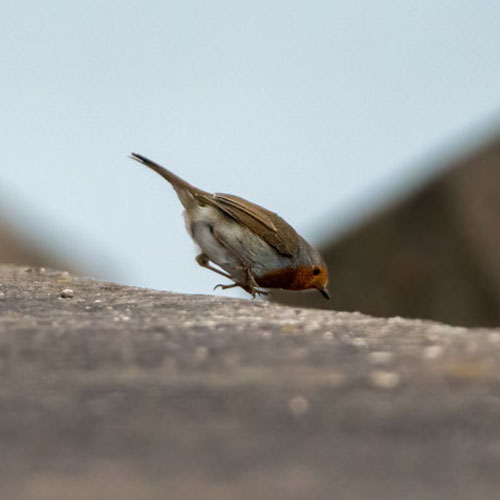 |
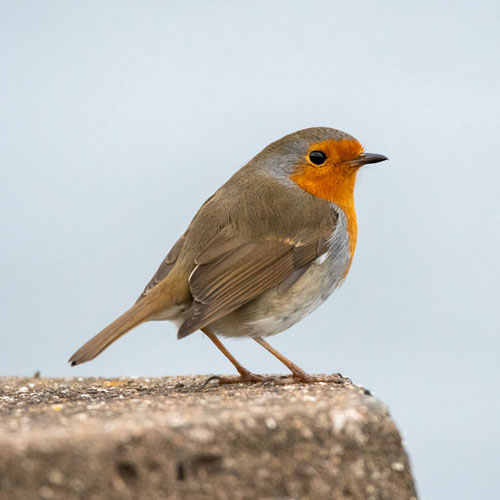 |
| Rock Pipit |
Oystercatcher |
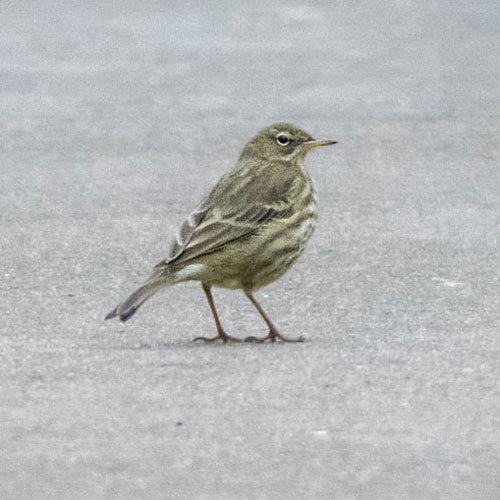 |
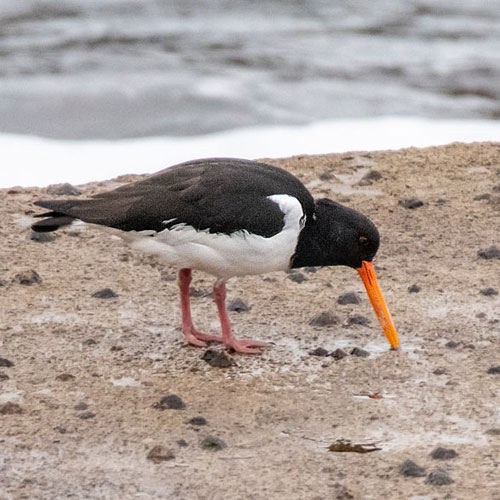 |
Below is the view of the Barns Ness lighthouse and the Bass Rock, as seen from the breakwater
section of the walkway.
We waited a while on the breakwater in order to observe passing birds. We were pleased to see an
adult Cormorant bedecked in early breeding plumage. We were visited also by a couple of wee
Pied Wagtails.
Looking west from the breakwater we could see the beach at Skateraw. Note, at the bottom right
of the picture, some of the tetrapods packed around the breakwater.
We watched a few Eiders, brightly-coloured drakes and the neat, but dull females, diving for
shellfish. A few others flew in from the east to join them. Eventually we headed back to the car via
the upper walkway, the recommended route when the sea waves are lashing the lower walkway.
That wasn’t the case on Sunday. We simply wanted to scan the area between the walkway and
the power station. A Meadow Pipit made a timely appearance when it hopped onto a fence
post and then descended onto a tetrapod, where it posed nicely for me.
The light was becoming very dull as clouds thickened and the wind stiffened and it became rather
chilly. We relocated to the shelter of Dunbar Harbour , a few miles to the west. We walked
around the harbour to the Battery and got some nice views of the rock called “Round
Steeple”, a convenient resting spot for damp Shags and Cormorants (not to mention gulls ).
A closeup of Round Steeple shows an adult and a juvenile Shag and also
a couple of Great Black - backed Gulls. In the channel between the Rock
and the Battery there were passing Herring Gulls and Eider diving for
shellfish. We could see more Herring Gulls and Shags gathered on rocks
called “The Gripes”, which are about 150m to the west of
the Battery. We walked around the north side of the harbour to stairs
that lead to a viewpoint that allows super views of the Gripes, which
each year becomes a nesting colony for those birds.
I spent a bit of time photographing the very active Shags as they flew on and off the rocks.
Each Shag seemed to be guarding its own wee patch of rock, probably with the intention of
building a nest.
We paused at the harbour entrance to take pictures of a Herring Gull and its juvenile sitting below
the walls of the ruin of Dunbar Castle. John watched the harbour waters for any sign of Sammy
the Seal while I wandered round to the south side of the Castle ruin. I photographed some
charming House Sparrows that were in and around the stacks of fishermen’s lobster creels.
At the Castle ruin I also snapped some amorous Feral Pigeons courting on the fractured
walls.
We finished the trip reasonably satisfied with our sightings. I particularly enjoyed seeing the
Stonechat and the flypast of the mature Cormorant at Torness. Also, it was exciting to see the
beginnings of the latest Shag colony at Dunbar Harbour. Before we set off for home, we once
again imbibed tea whilst sampling Morrisons’ finest strawberry tarts, hoping that we might get a
sunny day next week
Week ending: 5th February 2023: Stevenston and Irvine Harbour
I was pleased to find that my WeatherPro app was predicting good weather for Sunday on the
Ayrshire coast, since John and I hadn’t been west for a couple of months. I decided that our good
old faithfuls, Stevenston and Irvine Harbour would be our next destinations. We set off in bright
weather but we were delayed by a road work diversion on the A71 and our breakfast in
Stevenston Morrisons was also delayed by 30 minutes (6/10: poor due to the wait for our food
which was badly made, greasy and on too small a plate). To make matters slightly more
frustrating, when we reached Stevenston Point, the lovely blue skies were clouded over.
On the Point there was a cold, stiff , southern breeze blowing up the Clyde Estuary, leading to
very choppy waters. John spotted the only bird we saw on the sea, a wee black Shag.
We were parked near a big puddle around which were Herring Gulls and Carrion Crows. On the
rocky tip of the Point we saw a small flock of Oystercatchers huddled down, sheltering between
the rocks.
| Herring Gull |
3rd Cycle Herring Gull |
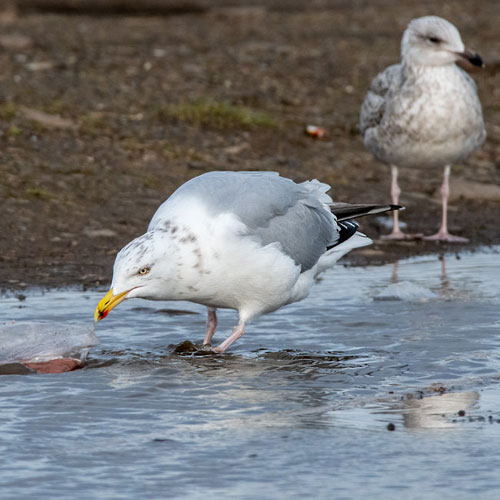 |
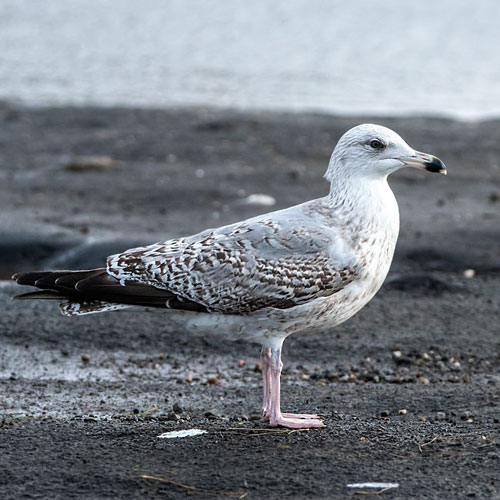 |
| Carrion Crow |
Oystercatcher |
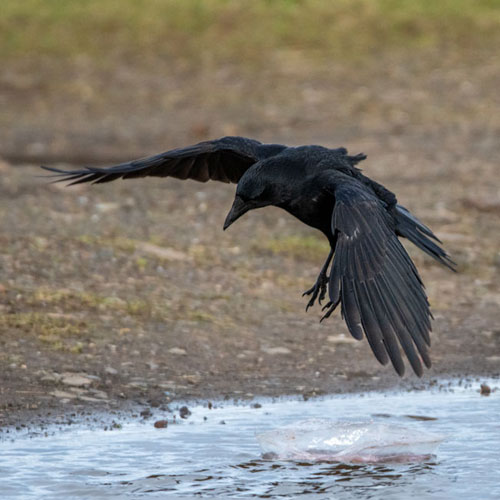 |
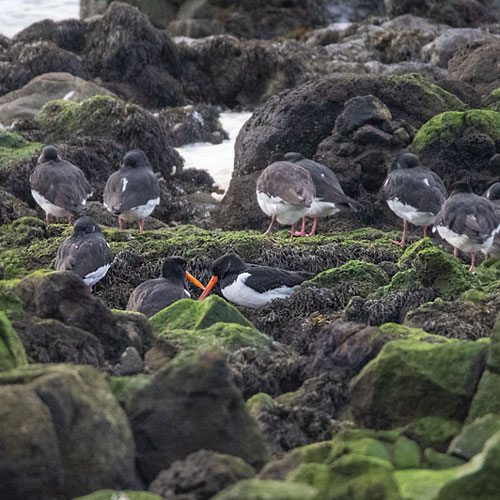 |
We walked around the perimeter of the Point. John noticed a flock of small, grey-coloured waders
flying in and settling at the northwest corner of the promontory. We couldn’t make them out at first
but as we moved closer we could see there were Ringed Plovers, Dunlin and a Redshank
standing bravely facing the wind.
I moved slowly towards the edge of the rocky area the birds were occupying and managed a few
closer photographs of the Ringed Plovers, some of which showed the less numerous
Dunlins . I was careful not to disturb the birds because they had enough of a problem with
the inclement conditions.
Next we headed for Ardeer Quarry LNR (WebSite), where we expected much calmer weather
conditions and quickly set off on our usual circuit around the reserve. As we left the car we
disturbed a few Jackdaws that were feeding in the short grass. We started at the large pond
where a few Mute Swans were socialising (to begin with). Just a few moments later a large cob
chased a younger bird off the pond and into the air and out of sight to the west. Moments later
another large cob chased another young bird. We reckoned there was competition for females
just before breeding season.
Things settled down and I was able to snap a few distant Tufted Ducks
that were diving mid - pond. We then moved from the pond onto the path
that circles the area of the old quarry. There I came across Snowdrops
and Gorse flowers, which brightened what was becoming a dull day as
more clouds rolled in.
| Drake Tufted Duck |
Female Tufted Duck |
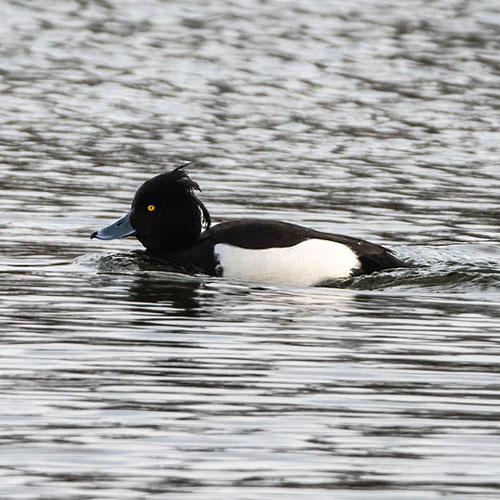 |
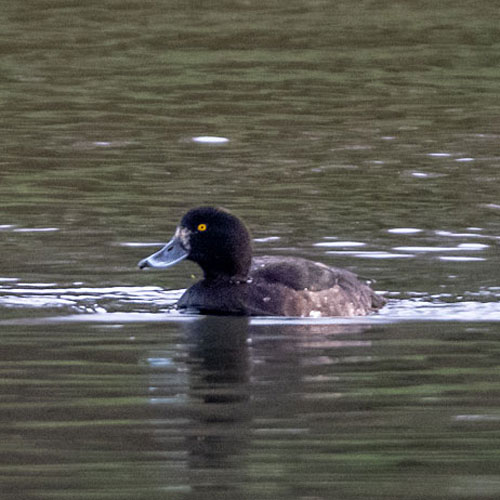 |
| Common Snowdrop |
Gorse |
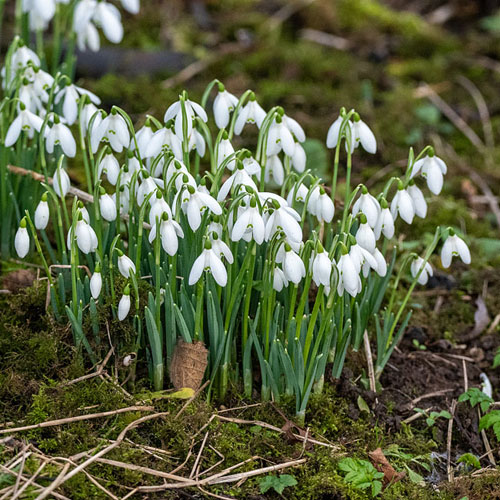 |
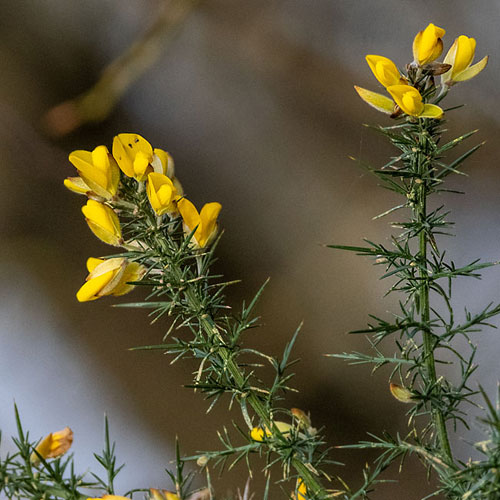 |
At the eastern side of the path we encountered a pair of Roe Deer that emerged 10m in
front of us, from the trees. You can see that they were as startled as we were. We left the reserve
briefly and moved along Dubbs Road before re-entering the reserve by another footpath. There
we heard, then photographed, a serenading Robin. A little further along the path Goldfinches were
feeding in the high branches of Silver Birch trees. A female Blackbird was sitting near the base of
one tree. As we completed the circuit around the old quarry John spied a Treecreeper
working its way up a path-side tree trunk.
John then got very excited when he discovered a Buzzard sitting atop a small tree on land
that was once a pitch and putt course, but was now planted with saplings. The Buzzard obviously
saw us but didn’t fly away immediately, allowing me time to get a decent shot. It suddenly
descended to the ground and then flew to another, taller tree. However, it was then pestered by a
pair of Carrion Crows that drove it off.
As we moved onto the path that leads us back to the car park, a pair of Grey Herons flew past. I
think one was an adult and the other a younger bird. The juvenile landed behind trees at the edge
of the park. I then noticed a bird that passed overhead, silhouetted in the poor light, had the jizz of
a raptor. The plumage markings seen in the record shot below indicates it was probably a
Sparrowhawk. A pair of Mute Swans were acting all luvvy-dovey at the edge of the island
in the pond, a contrast to the aggression we’d seen at the start of our walk.
| Grey Heron |
Juvenile Grey Heron |
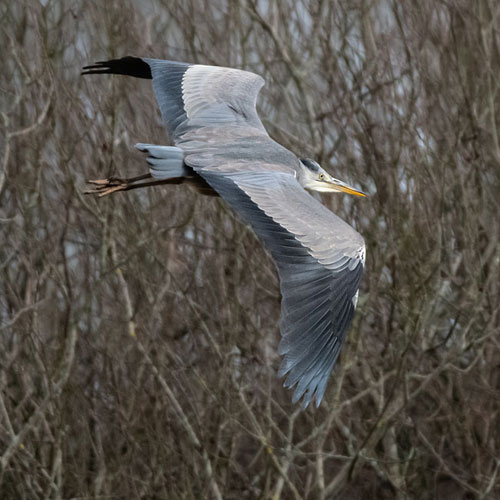 |
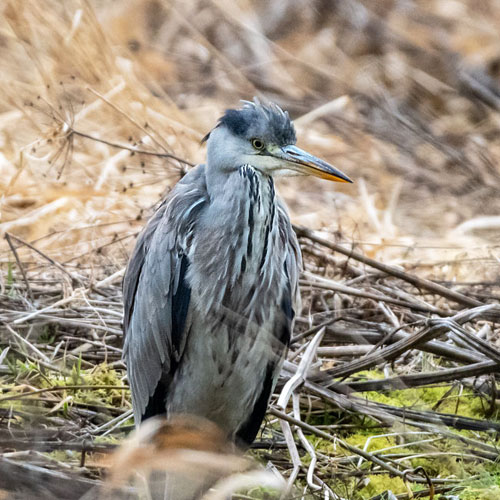 |
| Sparrowhawk |
Mute swan |
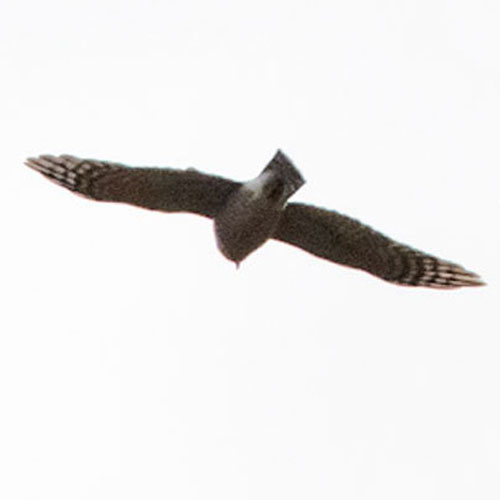 |
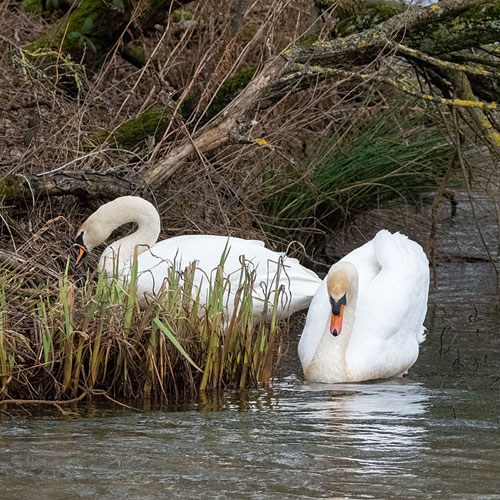 |
We relocated a few miles south to Irvine Harbour. By the time we arrived there, the cold wind had
strengthened and the light had dimmed. However we persevered, aiming to photograph as many
sightings in a short period of time, for we were salivating at the thought of a pair of strawberry
tarts in the boot. Things went well. A wee Shag surfaced in the River Irvine as we walked near the
Scientists Bridge. This was followed by a distant shot of a pair of Grey Seals that were
lounging on what looks like a large oil barrel floating about 300m away on the River Garnock.
John then drew my attention to a female Red-breasted Merganser that had surfaced just
below us at the confluence of the two rivers. I then got a nice portrait shot of a preening Mute
Swan, followed by a quick shot of a Carrion Crow that had nicked a dod of bread intended for
some other birds. Near the Coastwatch/toilet block I snapped a shot of a young Herring Gull
raking through some seaweed for juicy invertebrates.
| Shag |
Grey Seal |
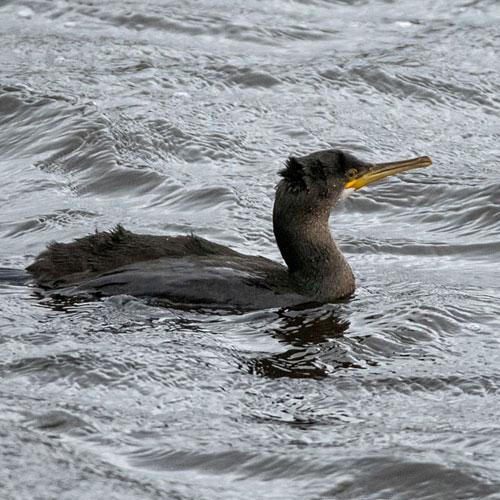 |
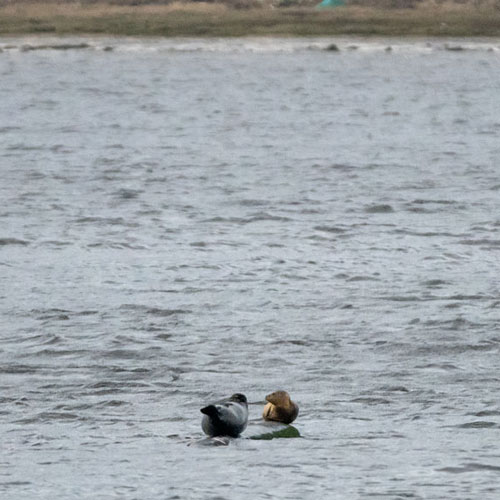 |
| Red - breasted Merganser |
Mute Swan |
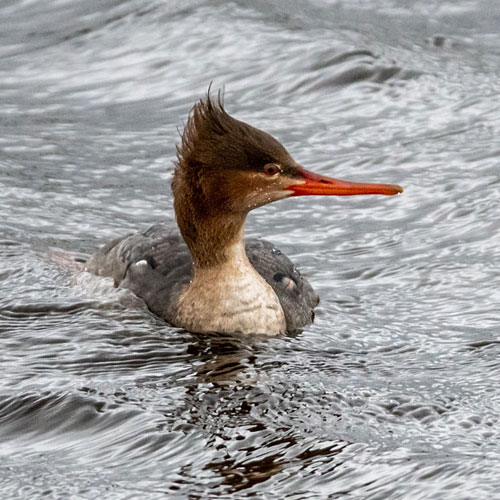 |
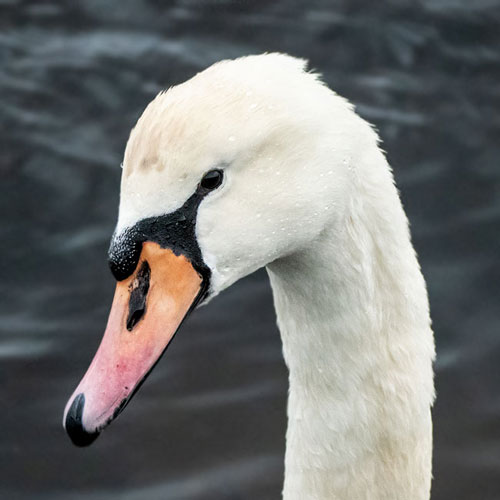 |
| Carrion Crow |
1st Cycle Herring Gull |
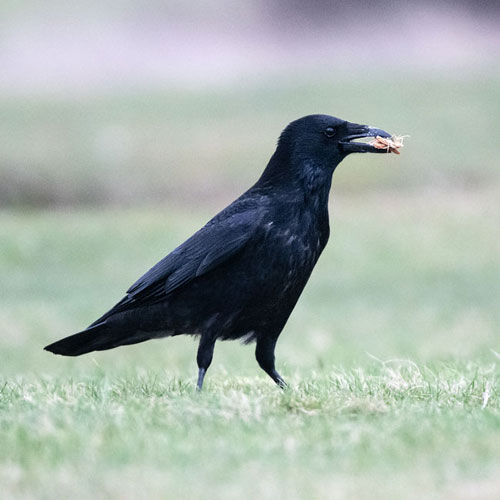 |
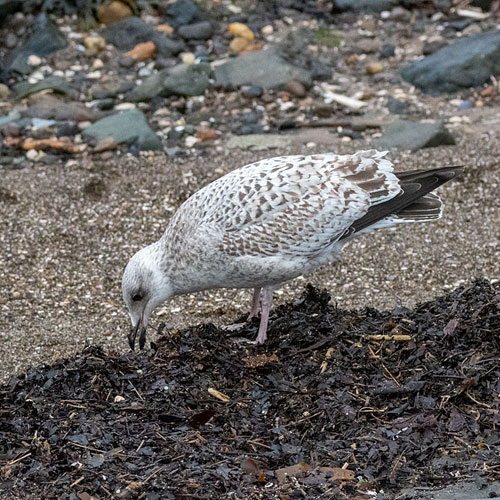 |
I finished the day at the viewpoint at the mouth of the River Irvine. Below is the view of the estuary
as seen looking back from the viewpoint.
I had an exciting time photographing drake Red-breasted Mergansers diving in the waters about
30m to the south of the viewpoint. As the foaming waves broke around them they made repeated
dives while bobbing up and down with the passing of each angry wave. Goodness knows how
they survived the violent buffeting from the waves in such shallow waters over a rocky seabed.
But they did seem to relish it.
Once again we were very satisfied with our collection of sightings. My favourites were the close
encounter with the Roe Deer, the Buzzard, Treecreeper and the drake Mergansers. Needless to
say, the Tea and Strawberry tarts were a delight and a fair reward for a successful trip.
Highlights - February 2023
We present this month’s gallery of my
favourite pictures I’ve taken during Febuary 2023. They are
not listed in the order they have been taken, but according to a series
of themes. I’ve kept
commentary to a minimum, preferring to let each picture talk for itself.
IN THE AIR
| Blue Tit |
Coal Tit |
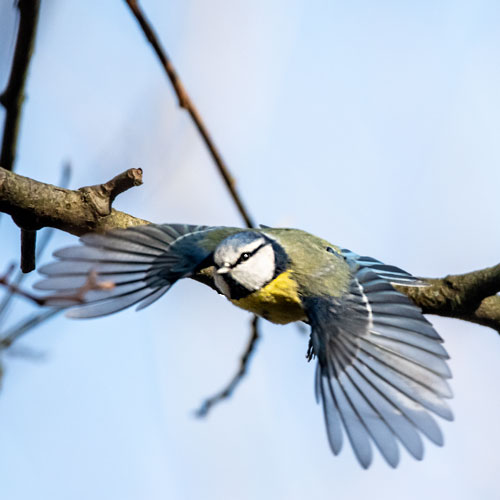 |
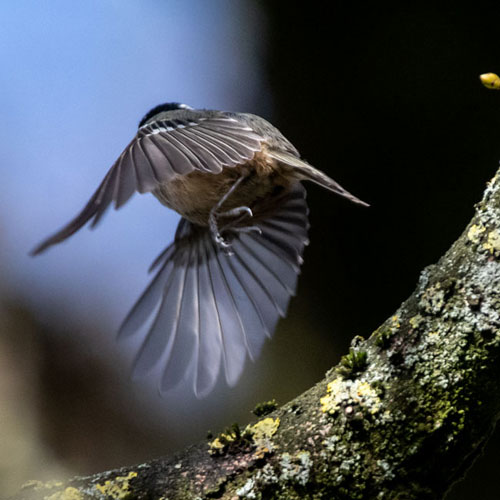
|
| Cormorant |
Long - tailed Tit |
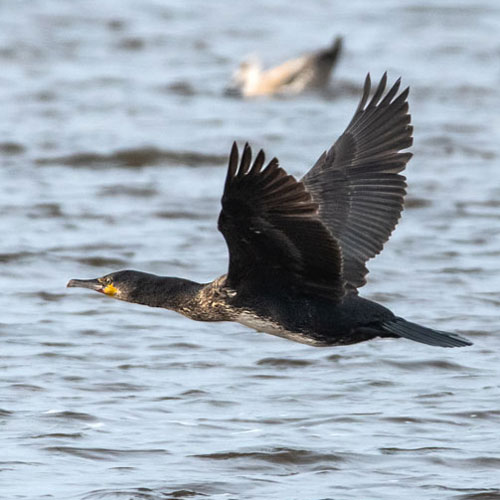
|
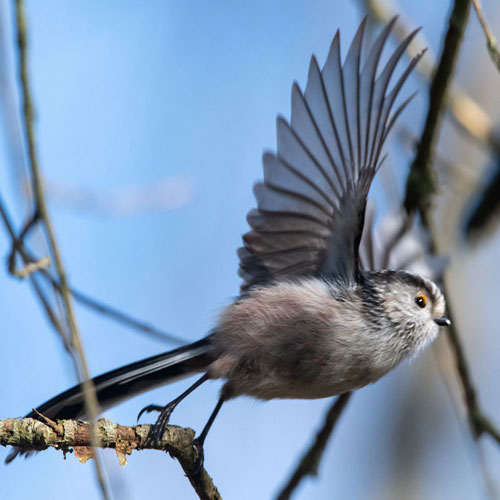
|
| Mallard |
Mistle Thrush |
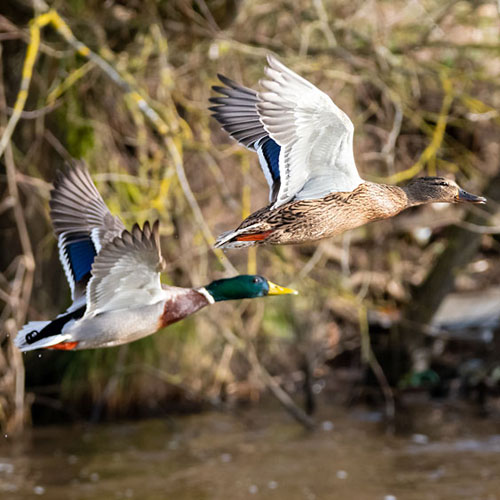 |
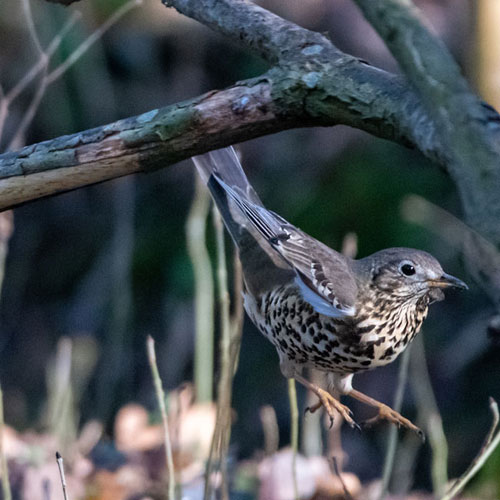 |
ON THE GROUND
| Jackdaw |
Roe Deer... |
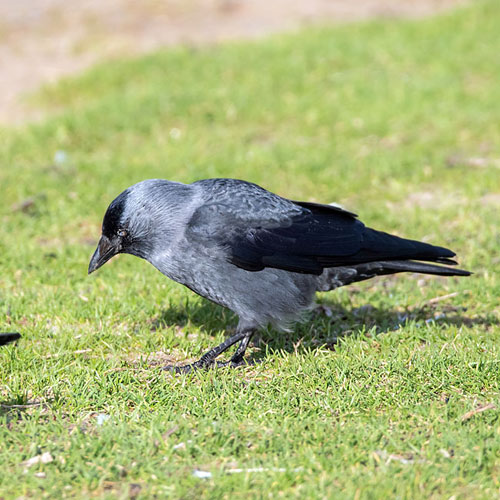
|
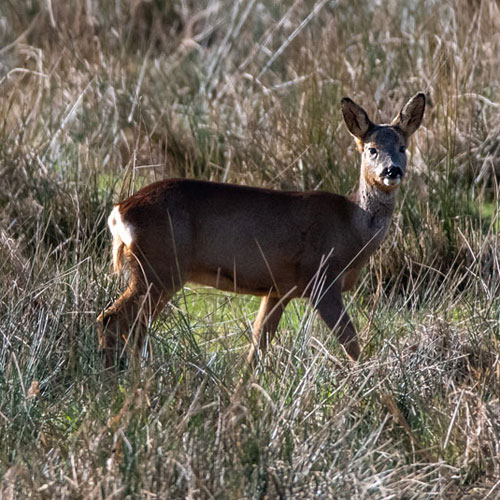
|
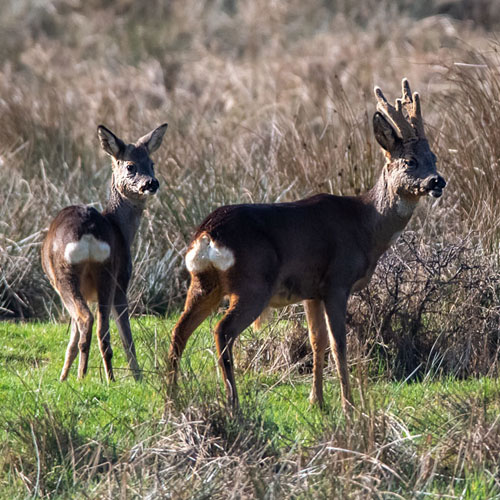
|
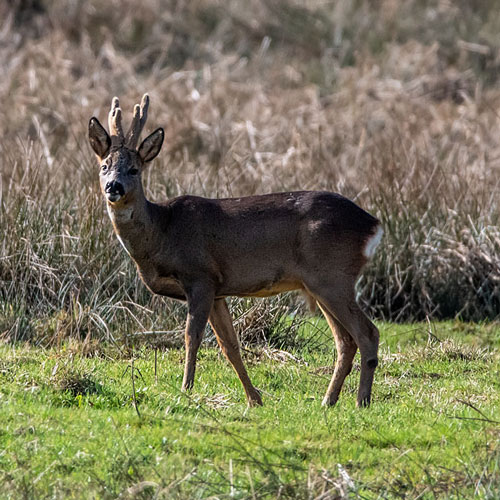
|
| Scarlet Elf Cup |
Common Snowdrop |
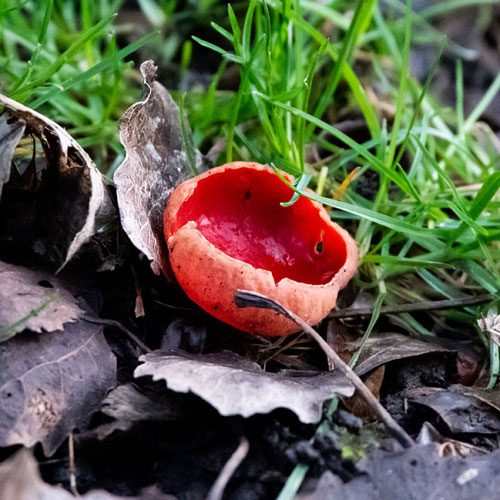
|
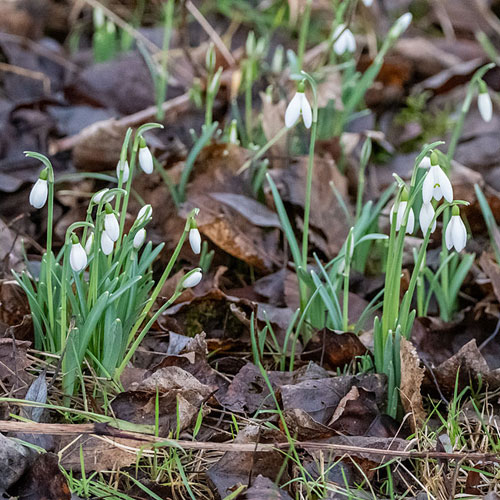
|
ON A TREE
| Blackbird |
Blue Tit... |
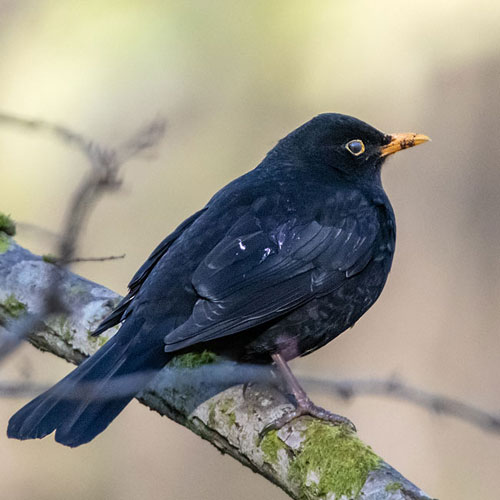 |
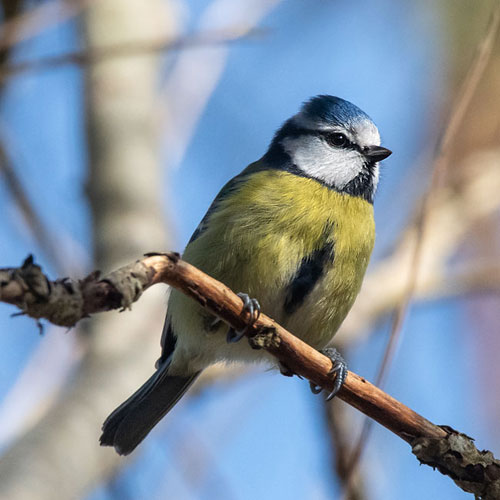
|
|
Chaffinch |
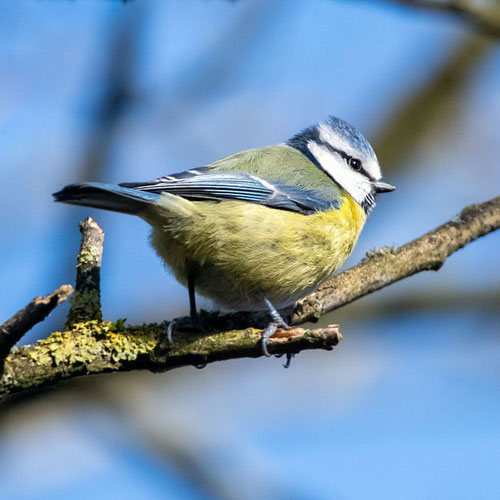 |
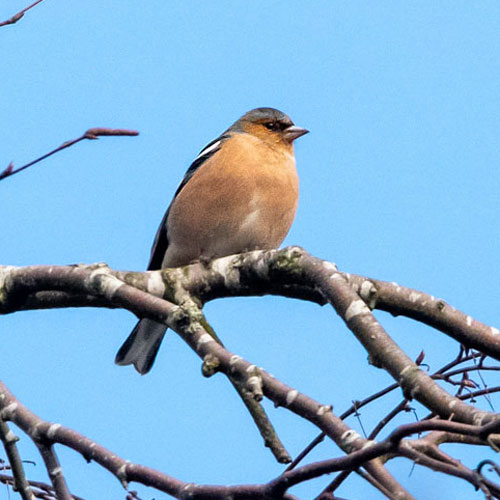
|
| Coal Tit |
Long - tailed Tit |
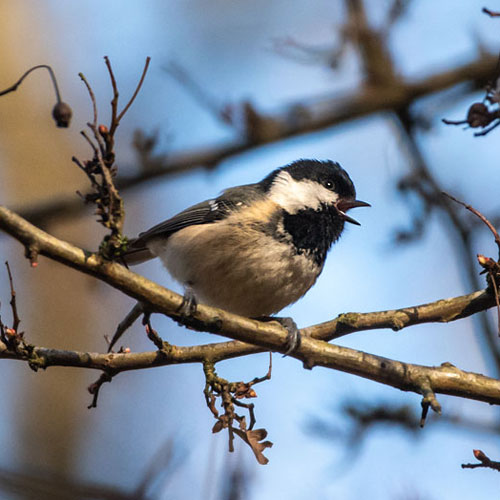
|
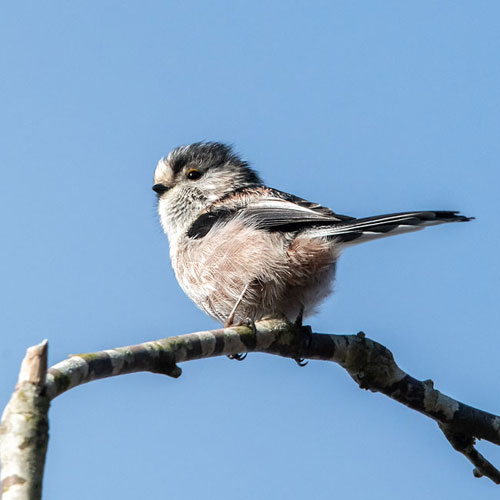 |
| Redwing |
Treecreeper |
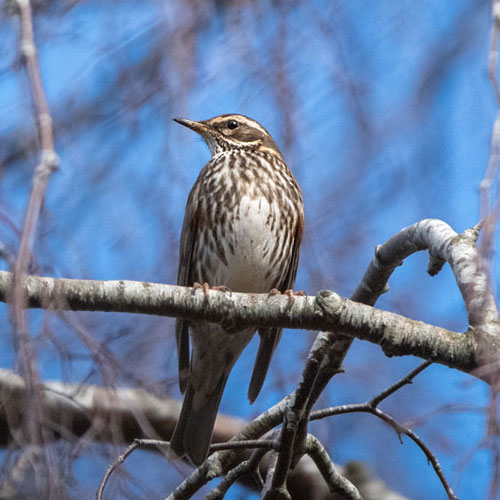 |
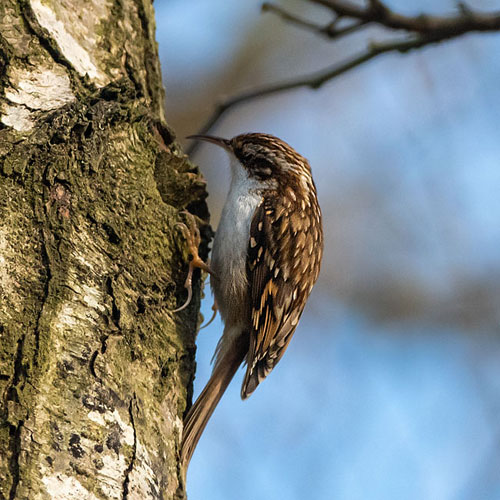 |
PORTRAITS
| Great Crested Grebe |
Greylag Goose |
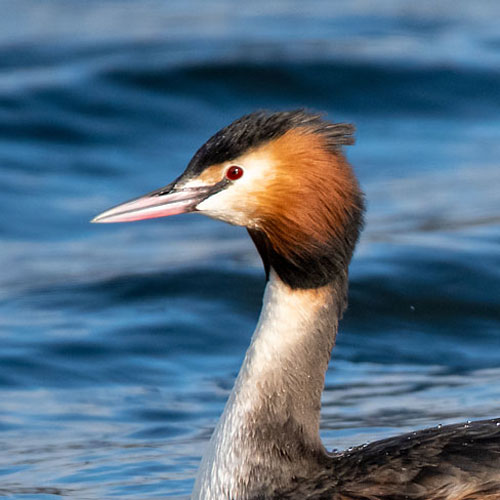
|
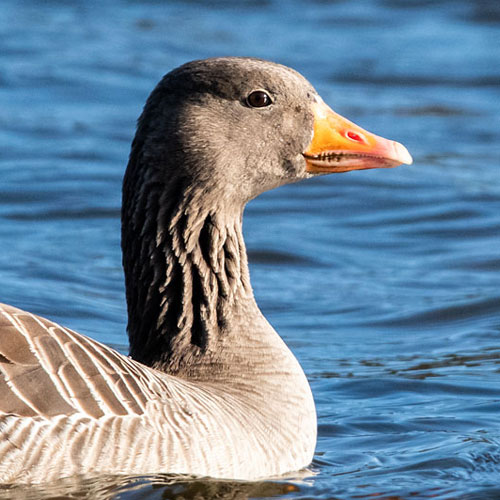
|
| Long - tailed Tit |
Mallard... |
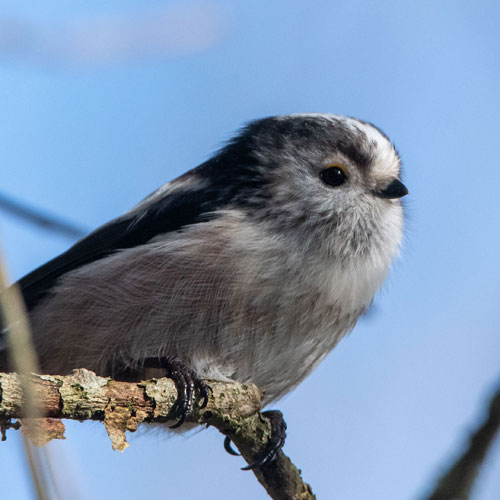
|
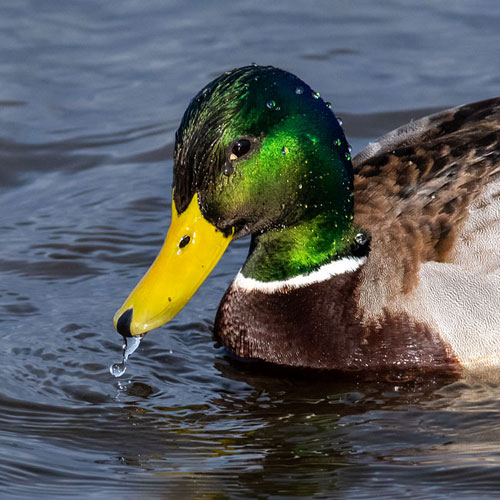 |
|
Whooper Swan |
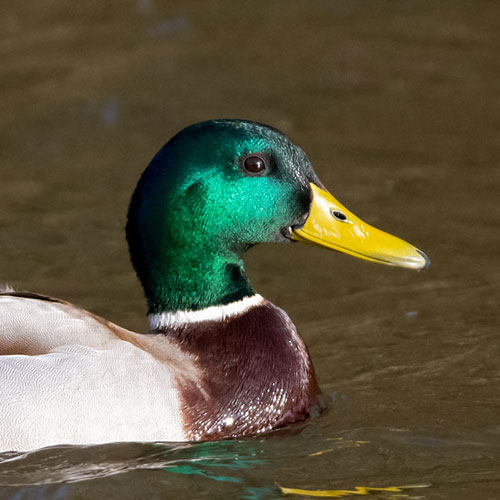 |
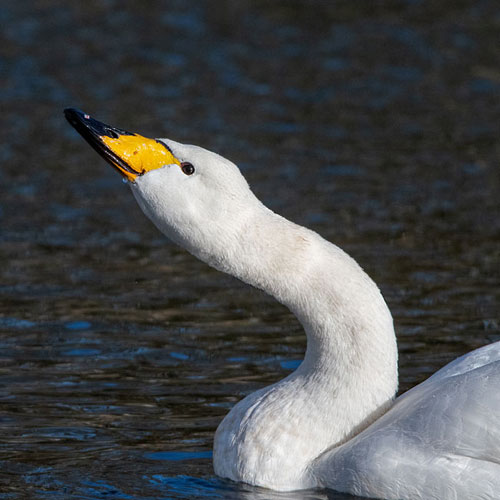
|
HAVING A NIBBLE
| Blue Tit |
Coal Tit |
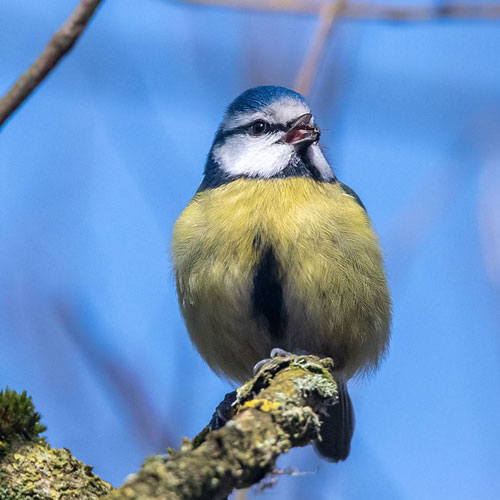
|
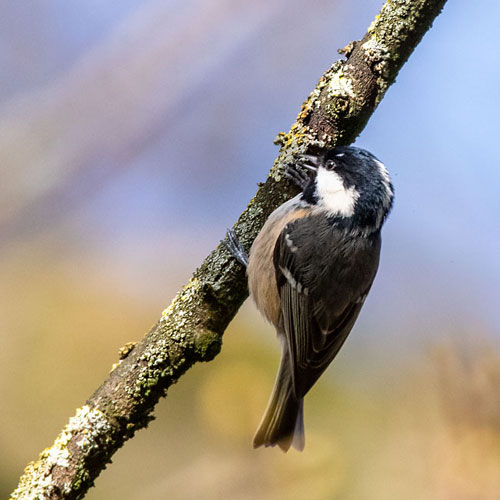
|
| Coot |
Goldcrest |
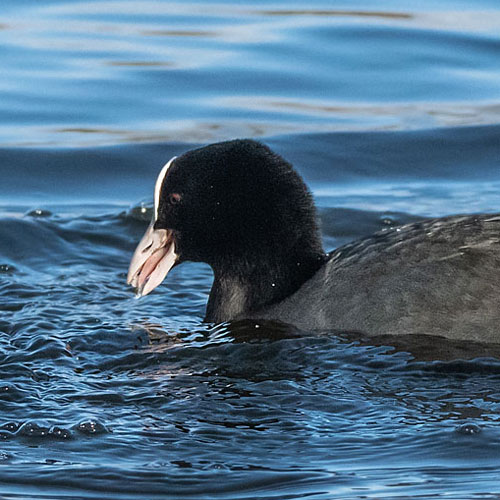 |
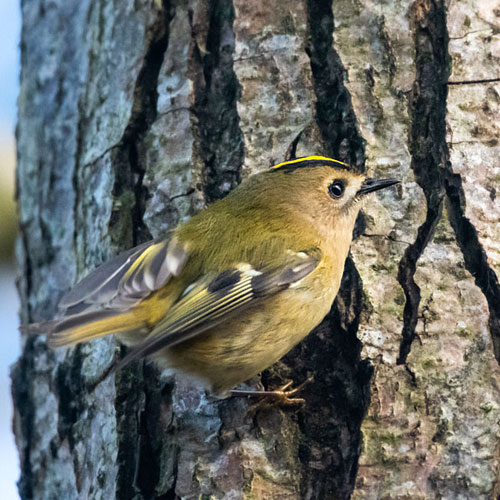
|
| Great Tit |
Little Grebe |
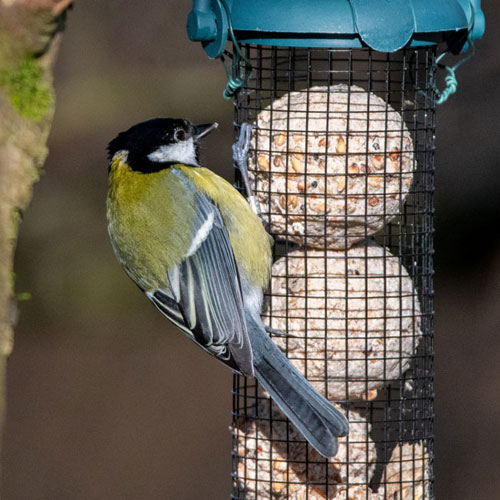 |
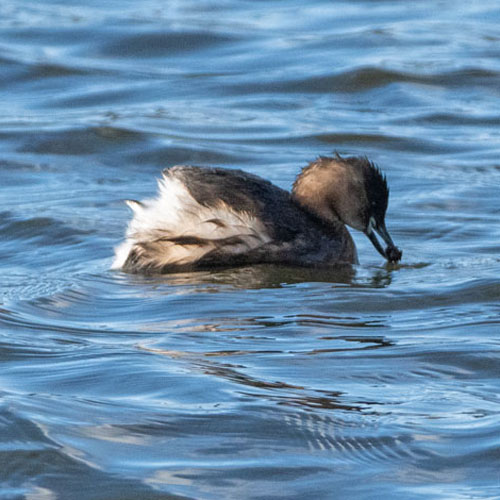 |
ON THE WATER
| Goldeneye |
Female Goosander |
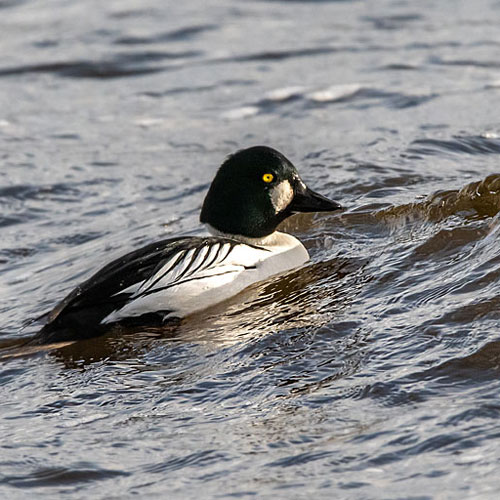 |
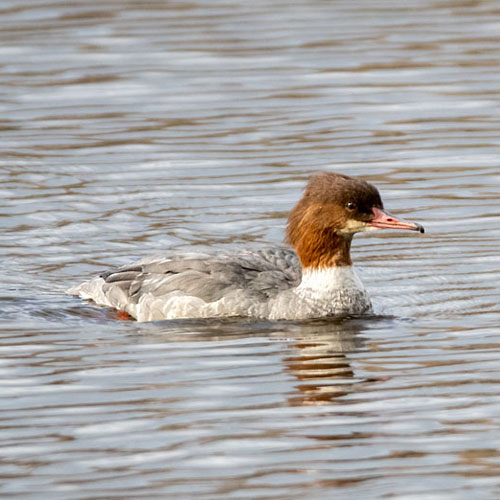 |
| Drake Goosander |
Greylag Goose |
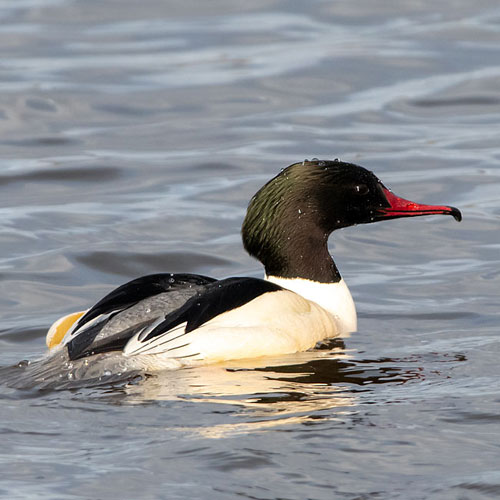
|
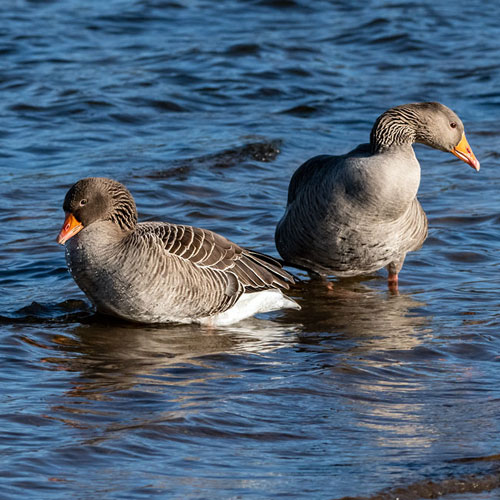 |
| Little Grebe |
Mute Swan |
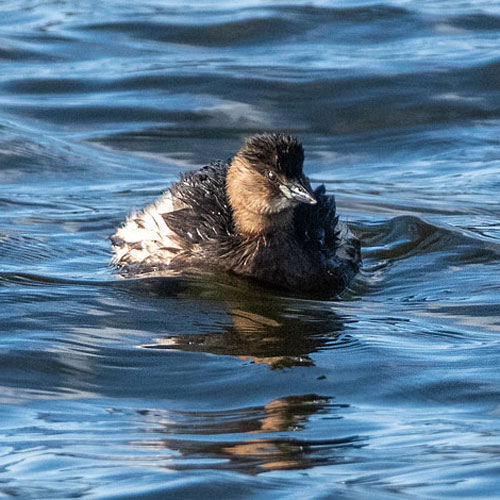
|
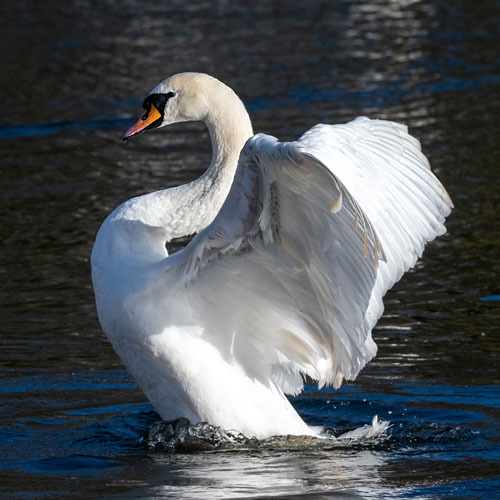
|
| Teal |
Whooper Swan |
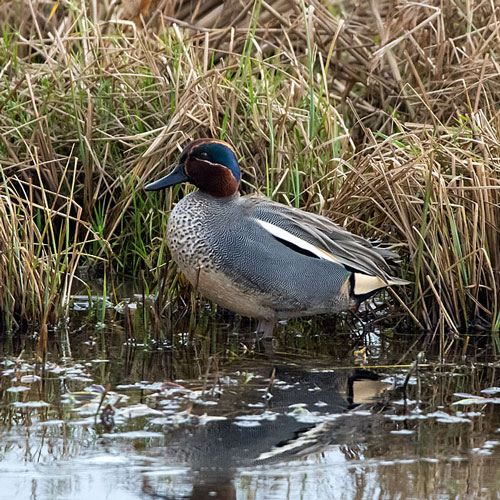 |
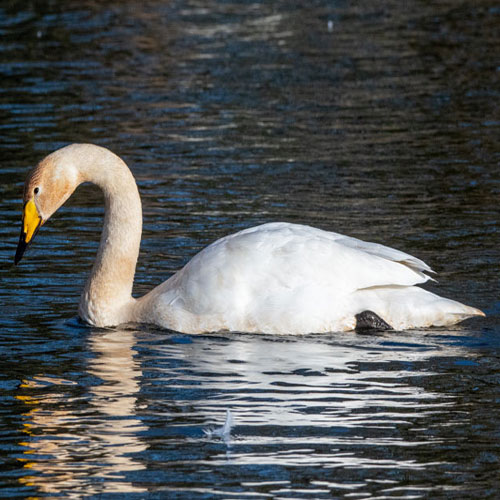 |
| Lapwing |
 |
WRENS AND ROBINS
Back To Top
|

